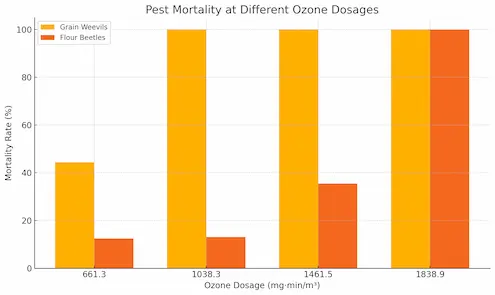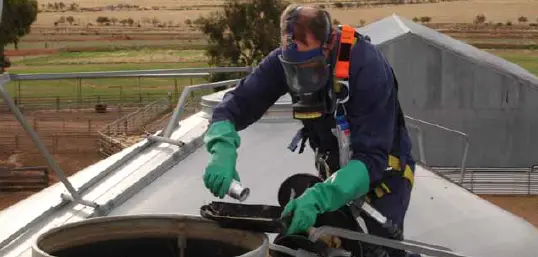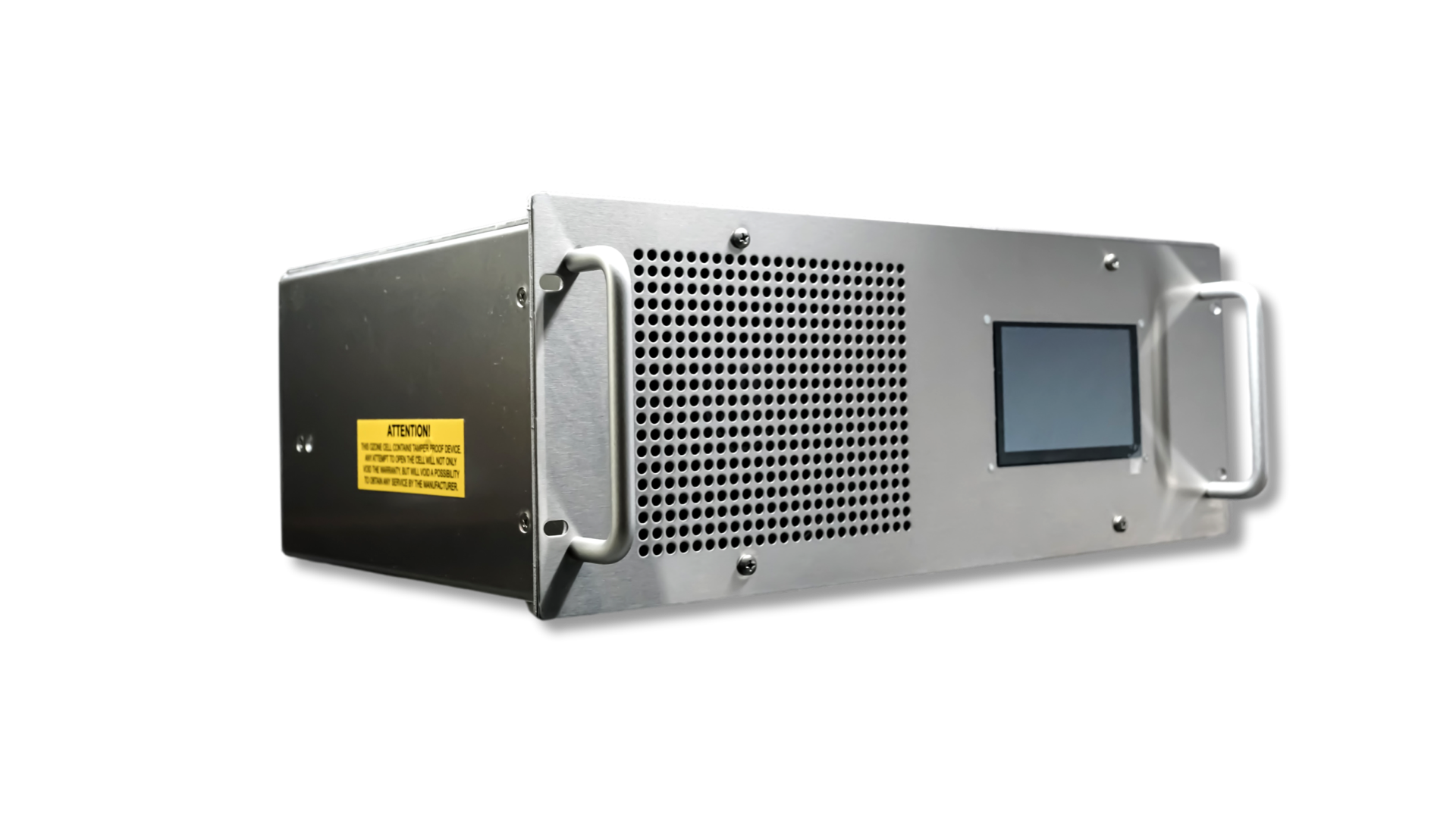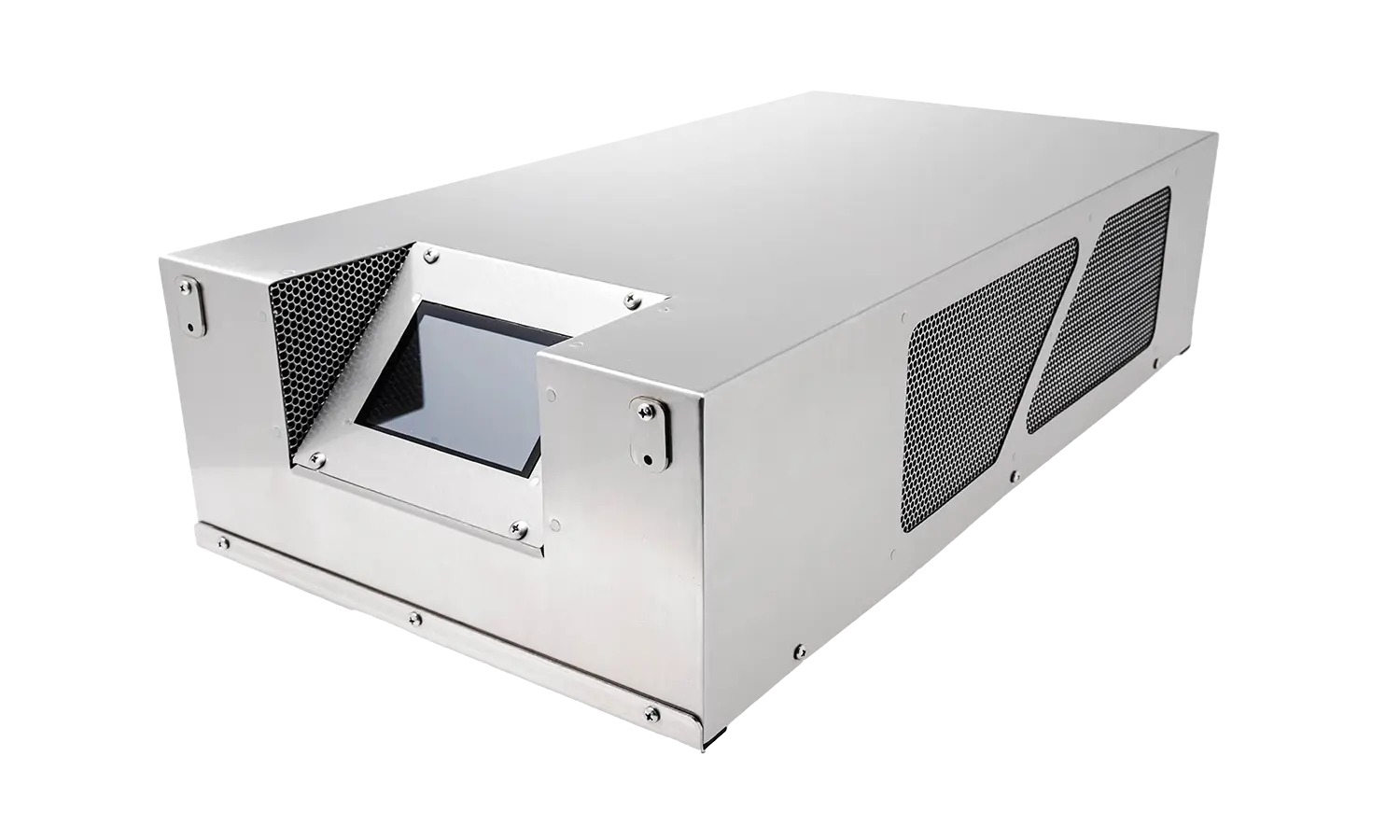Share This Story, Choose Your Platform!
Protecting Your Stored Grains: How Ozonation Solved a Farmer’s Battle with Grain Weevils
I remember conversing with a farmer a few months ago. He was facing a severe problem. His grain storage had been infested with grain weevils. And after trying everything he could think of, he was still losing more of his harvest to these tiny, destructive pests. I told him that he wasn’t the only one battling these critters; he was an organic farmer, too, so using harsh chemicals was out of the question.
He asked me, “What if there was a better, safer way to protect his grains?” That’s when we turned to ozonation.
What Are Grain Weevils, and Why Are They Such a Problem?
Grain weevils are tiny pests that can destroy an entire crop of stored grains. They target wheat, corn, rice, oats, and other grains, burrowing into the kernels and feeding off the insides. These little bugs aren’t an inconvenience—they can lead to massive crop losses. For our farmer friend, it wasn’t the grain grains illness that was suffering, but his bottom line.

The typical grain weevil measures about 1/5 inch long, with a reddish-brown body and an unmistakable snout. They’They’rek movers, and once they are into a grain silo, they go to work destroying crops from the inside out. The damage they cause is so severe that grain can become unsuitable for consumption or even animal feed.
The Damage Coefficient: Understanding How Weevils Destroy Grains
You might wonder how bad this damage really is. The damage coefficient measures just how much destruction weevils can cause. This number ranges from 0.4 to 1.5, with higher numbers meaning faster and more severe destruction.
For example, a lower damage coefficient like 0.4 means the weevils are causing minor damage, and the grains might still be salvaged. But when the damage coefficient hits 1.5, the grains are destroyed. The damage isn’t visual; it impacts the nutritional value, storage capacity, and even the potential to grow as a seed.
The study also points out that ozonation offers an eco-friendly, cost-effective solution with no harmful residues left behind. It preserves grain quality and worker safety, making it an ideal method for sustainable grain storage management (Baskakov_2023).
Without proper control, these pests can wipe out up to 15% of stored grain yearly, which means serious losses for farmers, especially those with ample storage facilities.
Recent studies, such as the one conducted by I. V. Baskakov et al. (2023), have demonstrated the powerful potential of ozonation in controlling grain pests like grain weevils and flour beetles. The research highlights that ozone concentrations between 1.4 to 5 g/m³ are effective for pest extermination. A 5-hour treatment at 1 g·min/m³ for grain weevils ensures complete extermination within 24 hours. Flour beetles require a longer 8-hour treatment and a higher dose of 1.8 g·min/m³ for full control, with the effects continuing over the next day.
 Source I. V. Baskakov et al. (2023)
Source I. V. Baskakov et al. (2023)
Conventional Methods: Expensive, Toxic, and Ineffective
For years, grain farmers have relied on chemical fumigants to control pests like grain weevils. While these chemicals might kill the insects, they also have some serious downsides.
- Toxicity: Many fumigants are hazardous to both humans and animals.
- Environmental Harm: The residues left behind can pollute air and soil.
- High Costs: The cost of regular chemical use can quickly add up, especially for farmers storing large quantities of grain.

However, there is a solution that is less harmful and more cost-efficient. Enter ozonation.
How Ozonation Saved the Day for Our Farmer
When we introduced the idea of ozonation to the farmer, he was intrigued but also a bit skeptical. Could ozone, a powerful oxidizing agent, really solve his pest problem? The answer, it turns out, was a resounding yes.
Ozone is incredibly effective at eliminating pests like grain weevils. Research has shown that even small concentrations of ozone—just 1 to 5 mg/m³—are enough to eradicate these pests. In fact, at the right concentration, ozonation has been proven to achieve 100% weevil mortality in just 24 hours.
Unlike chemicals, ozone doesn’t have residues behind it. It naturally reverts to oxygen, which means there is environmental impact, and it’s for workers and the grain itself. Plus, once ozone generators are installed, they can efficiently treat large storage areas, cutting down on long-term costs.
The Magic of Ozone: Safe, Effective, and Cost-Effective
So, what makes ozonation such an ideal choice for grain storage? It comes down to these critical benefits:
- High Efficiency: Ozone kills pests like grain weevils quickly and thoroughly. Studies show that it can achieve 100% mortality at the right concentration in just 24 hours, making it one of the most effective pest control methods available.
- Eco-Friendly: Unlike chemicals, ozone leaves no harmful residues behind. It is a sustainable, environmentally friendly solution that doesn’t compromise the quality of the grain.
- Cost-Effective: Once an ozone generator is installed, the cost of operation is minimal. You want to purchase chemicals, which can be expensive and have limited effectiveness over time.
- Preserve Grain Quality: Ozone kills pests without damaging the grain’s nutritional value or germination potential. That’s a thing chemicals can’t.
A Simple, Scalable Solution for Farmers of All Sizes
Ozonation is simple to implement and scalable, making it ideal for farms and storage facilities of all sizes. For the farmer I spoke to, it was a game-changer. By installing an ozone generator, he treated his grain storage areas quickly and effectively without worrying about the long-term impact of chemicals.
Here uses ozone for pest control:
- Install an Ozone Generator: Choose a system that can deliver the right concentration for your storage needs—typically between 1 and 5 mg/m³.
- Monitor Ozone Levels: It’s essential that the ozone concentration effectively eliminates pests and doesn’t have high levels for workers.
- Regular Use: Use ozonation regularly, especially during high-risk periods when infestations are more likely to occur.
At Absolute Ozone®, we provide state-of-the-art ozone generators that can help protect your grain storage facilities from pests like grain weevils. Our ozone technology not only improves pest control but also ensures the quality and safety of your crops.

Conclusion: Protecting Your Grain, Protecting Your Profits
Grain weevils can cause severe damage to stored grains, but with ozonation, you can protect your harvests in an influential and environmentally friendly way. By adopting ozone technology, you can avoid the dangers of chemical fumigants, reduce operational costs, and preserve the quality of your grain. Our farmer friend found success with ozonation, and so can you.
If you’re trying to protect your grains and profits, contact Absolute Ozone® today for a free consultation. Let us help you use the power of ozone to keep your grain storage pest-free with the power of ozone.





